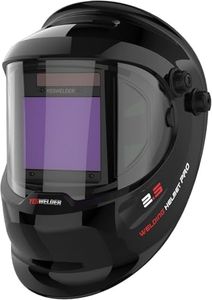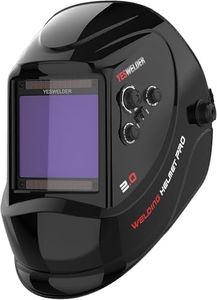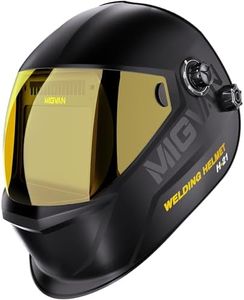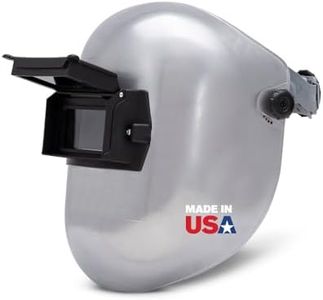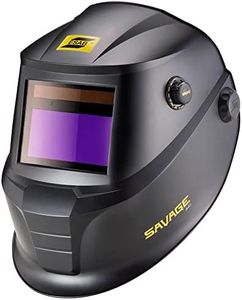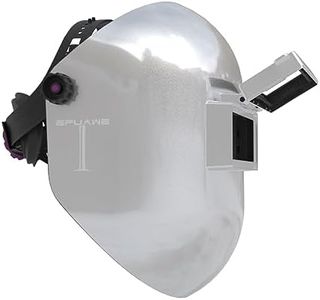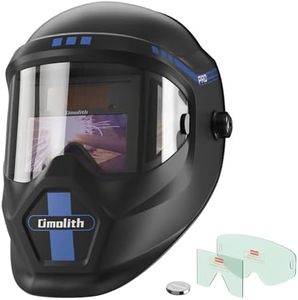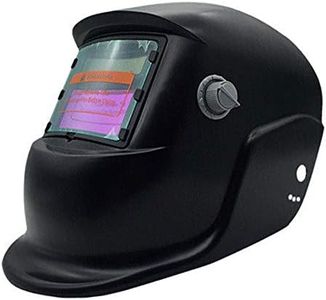We Use CookiesWe use cookies to enhance the security, performance,
functionality and for analytical and promotional activities. By continuing to browse this site you
are agreeing to our privacy policy
10 Best Welders Helmets
From leading brands and best sellers available on the web.Buying Guide for the Best Welders Helmets
Choosing the right welder's helmet is a crucial step for both safety and comfort while working. A welder's helmet protects your eyes and face from harmful UV and IR rays, sparks, spatter, and intense light that comes from welding. The right helmet will help minimize fatigue, improve accuracy, and keep you safe from long-term damage. When selecting a helmet, consider your typical welding tasks, how often you weld, your work environment, and your comfort preferences.Lens Shade RangeThe lens shade range refers to how dark the helmet's viewing lens can become to protect your eyes. This is important because different welding processes and power settings emit different levels of brightness. Lenses are usually rated with numeric values, such as 9-13 for darker shades used in arc welding or lower numbers for grinding and cutting. If you mostly do light welding or grinding, a helmet with a lower shade range may suffice. However, if you work with high-amperage welding, you'll need a helmet with a higher maximum shade value. Choose a range that comfortably covers all the types of welding you plan to do.
Auto-Darkening TechnologyAuto-darkening lenses automatically adjust their shade when an arc is struck, providing both protection and convenience. This is key to avoiding constantly flipping your helmet up and down, making work faster and safer. Some helmets offer fixed shades (one setting) while others provide variable shades for more flexibility. If you do a lot of different welding processes, a variable-shade auto-darkening helmet is likely the best choice. Think about your workflow: if you switch tasks often, auto-darkening can save you time and help reduce neck strain.
Viewing Area SizeViewing area is the size of the lens window you look through. A larger viewing area makes it easier to see your workpiece and surroundings, which is helpful for precision or when you need a broad view. Smaller viewing areas make the helmet lighter and can sometimes be more comfortable for simple, close-up tasks. If you need to see a wide work area or move around a lot, bigger is better. For specialized, close detail work, a smaller window could be sufficient.
Reaction Time (Switching Speed)Reaction time (or switching speed) measures how quickly the lens goes from clear to dark after the arc is struck, usually given in fractions of a second. Fast reaction time is important for eye protection and comfort; slower times could result in eye strain or a brief flash of discomfort. Most casual welders do well with standard speeds, but for frequent or professional welding, look for helmets with a faster switching speed. Choose the speed depending on how sensitive your eyes are and how often you weld.
Weight and ComfortThe weight and ergonomic design of a helmet affect how comfortable it is to wear, especially for long periods. Heavy helmets can lead to neck fatigue or headaches. Look for adjustable headbands, padding, and lightweight materials if you'll wear the helmet for extended sessions. Always try on the helmet if you can, and make sure it sits securely without shifting or causing discomfort.
Power SourceAuto-darkening helmets are powered by batteries, solar panels, or a combination of both. Battery-only models require regular replacement, while solar-assisted helmets can extend battery life and sometimes recharge passively in the light. If you weld infrequently, a battery-only helmet might be fine. For frequent or professional use, a solar-assisted or hybrid system can reduce interruptions.
Sensitivity and Delay ControlsSensitivity controls let you adjust how easily the helmet's lens reacts to varying light levels, while delay controls determine how long the lens stays dark after you finish welding. These features are useful if you work in different environments—like outdoors, where sunlight might cause unwanted darkening, or indoors with varying light sources. Pick a helmet with user-friendly controls if you need this type of customization for different tasks.
